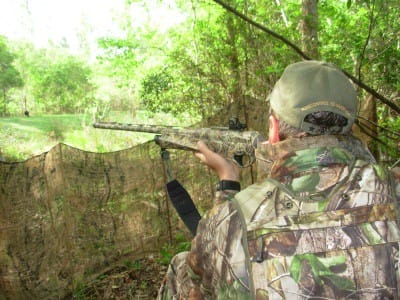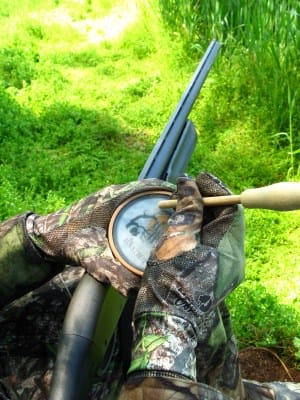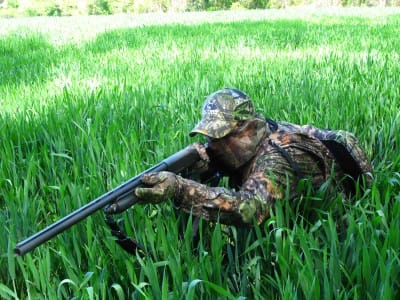 You still have a turkey tag left attached to your license, or even worse, you haven’t filled one yet. Don’t panic. There’s still time even if the remains of the season can only be measured in days. Try one of these tactics to finish the year up on a high note.
You still have a turkey tag left attached to your license, or even worse, you haven’t filled one yet. Don’t panic. There’s still time even if the remains of the season can only be measured in days. Try one of these tactics to finish the year up on a high note.
Don’t Be Late: By the end of the season, mating activity is winding down and gobbles are getting rare. In fact, some days you may head out and not hear a thing, particularly if you are not in the woods at fly-down time. Certainly, few if any toms will gobble once they are on the ground, so for that reason you absolutely have to be to your hunting spot before sunrise.
This may be your only chance to hear a bird gobble and use that gobble to pinpoint his whereabouts. This late in the season, a tom is apt to only gobble a few times from the roost, so get to his basic location fast-before he flies down. The woods are good and leafed out by this time of year, so if you’re careful, you should be able to get fairly close to the tom’s roost tree, ideally within 75 yards or so. Get in tight, set up, offer a few soft calls and, if all goes well, Mr. Tom will pitch down right in front of you.
Switch Up Your Calls: Most hunters stick to the basics throughout a season-box calls, pot calls and mouth calls. They are the most common and often the easiest calls to learn. Listen to enough of them though and they all seem to kick out the same basic tones and pitches.
Change it up and go with something out of the norm like tube call or a wingbone. Friend and outdoor writer Jim Casada, one of the most knowledgeable turkey writers out there, swears by his old wingbone. Another friend, Primos Hunting Calls Pro-Staffer Tommy Barham, is known for his abilities with a tube call. A tube call isn’t that much harder to learn than a diaphragm and for the hunter skilled with one, it’s a good bet, you will be one of the few guys at your club or on the tract of public land you hunt that uses one.
Beyond changing up the type of calls you use, remember to also change up the cadence of your calls. Too many hunters fall into the same rote rhythm and pitch just scratching out the same yelp, yelp, yelp every time they call.

Hunt the Rain: I love hunting rainy days because the wet weather drives turkeys into the open fields. Dripping woods spook them with all the motion and noise. It makes it harder for turkeys to detect danger. So they head for the open where they can dry off and see anything approaching.
If toms aren’t gobbling late in the season, I can at least get my eyes on them when they come to a field or food plot on a rainy day and plan an ambush. Watch which way they are feeding or strutting, and set up along their path at the edge of the woods. Then just wait them out.
Sit a Stand: Unfortunately, late season is not necessarily the most exciting time to turkey hunt, but it can still be productive. It just takes a different mind set. Key to this new mind set is taking a deer hunter’s approach of setting up in a likely travel corridor or loafing area for turkeys, calling sparsely and waiting on ol’ Tom to show up for a shot. Look for spots where leaves have been scratched up leaves indicating turkeys like to feed there or set up along field edges or plots littered with turkey tracks, droppings or dusting bowls.
Be patient, throw out the occasional yelp every 15 to 20 minutes, scratch in the leaves to mimic a turkey walking and feeding, and stay alert – a gobbler may well just slip in on you without ever making a peep.
Move With the Wind: Sometimes a gobbler will get locked in his strut zone and simply strut back and forth waiting for that hen to show up. If you’re lucky and you have wet ground or a little wind to mask the sound of your footfalls as well as adding some motion to the leafed out woods, you may be able to ease closer to one end of the longbeard’s strut zone.

Every time the bird gobbles, indicating that he is moving away from you, simply ease forward from tree to tree, using the trunks to keep hidden. Take your time and ease to where you can get a shot at the end of the strut zone closest to you. When the gobbler returns, you’ll be ready. Always keep safety in mind and remember to positively identify that it is indeed a tom that you are working. That’s why you move on the end of the strut zone and not the actual gobbler.



